#Samsung Galaxy A75 5G Price
Explore tagged Tumblr posts
Text
Samsung Galaxy A75 5G - Price in India, Specifications & Features | Mobile Phones
Samsung किया Galaxy A सीरीज में दमदार स्मार्टफोन Samsung Galaxy A75 5G लॉन्च! अपने बेहतरीन फीचर्स और प्रीमियम डिज़ाइन के साथ! इसमें दे दिया 6.7 इंच की Super AMOLED Plus फुल स्क्रीन डिस्प्ले, 12GB रैम के साथ सबसे सस्ते प्राइस में, Samsung Galaxy का A75 5G स्मार्टफोन एक बढ़िया मिड-रेंज स्मार्टफोन है, जो प्रीमियम फीचर्स और सुपर परफॉर्मेंस के साथ मार्केट में लॉन्च हुए। इसके डिजाइन, डिस्प्ले, और…
#BSNL 5G SmartPhone#buy galaxy a75 5g#buy galaxy a75 5g online#cashback#deals#emi#galaxy#galaxy a75 5g blue#galaxy a75 5g price#galaxy a75 5g specs#Mobile#offers#Samsung Galaxy A75 5G#Samsung Galaxy A75 5G Price#Samsung Galaxy A75 5G Price in India#Samsung Galaxy A75 5G Specs#Today Wold
0 notes
Text
Samsung Galaxy M64 128 GB And 8 GB RAM Mobile Phone Cheapest Price Amazon

The price of the Samsung Galaxy M64 5G is 550 US dollars / 499.00 to €530, Prices are for the 128 GB, 256 GB storage + 8 GB RAM model. The Samsung Galaxy M64 mobile is a mid-range smartphone offered by Samsung and one of the most outstanding phones that the company offers in this price range. Coming with a huge battery and a large Super AMOLED Plus screen, the phone is powered by the Android 13 operating system along with the One UI 5.1 user interface and offers many features. The phone is powered by a powerful Octa-core processor that is built with the layout of an Exynos M4, Cortex A75 and a Cortex A55 graphics processor , Mali-G76 MP12 GPU and 8GB RAM.
Is Samsung M64 out?
The Samsung Galaxy M64 5G are Samsung's new midrangers, and the phones just got announced, ready to take on the affordable market by storm and join the best mid-range phones in 31 May, 2023. ... Samsung Galaxy M64 5G release date. Device family Announcement Market release Samsung Galaxy M64 5G May 31, 2023 May, 2023
What Android version is Samsung Galaxy M64 ?
On the software front, the Galaxy M64 should launch with Android 13-based One UI 5.0.
What color is the M64 5G?
The Galaxy M64 5G will be available in four color options, including Awesome Lime, Awesome Silver, Awesome Violet and Awesome Graphite. Read the full article
0 notes
Text
Xiaomi phones Review
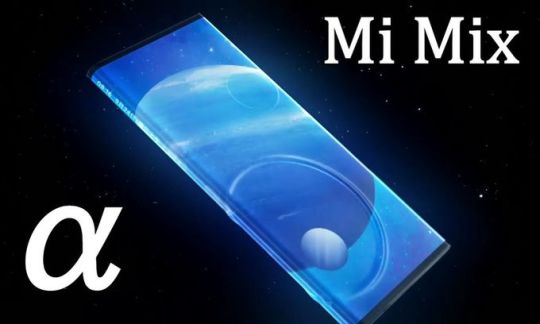
Today, more than 600 companies produce smartphones. However, almost 80% of the world market belongs to ten major manufacturers, including South Korean Samsung (19%) and LG (3%), American Apple (12%), Finnish Nokia (1%) and Chinese Huawei (13%, including Honor), Xiaomi (9%), Oppo (9%), Vivo (8%), Lenovo (3%, including Motorola), Tecno (1%). As known, the Chinese Xiaomi Corporation was founded in 2010. During this time, the company has developed and released a huge number of models in almost all price segments. Some series, for example, Xiaomi Mi Note, were discontinued, having existed for several years. But others were more successful.
Xiaomi series line
1.Xiaomi Mi - the main, flagship line; 6-inch or more IPS, or AMOLED displays, 8-core Snapdragon 660, 845, 710, 712, 730, 855 and 855+. 2018 - Mi 6X, Mi 8, Mi 8 Lite, Mi 8 EE and Mi 8 SE; 2019 - Mi 9T, Mi 9 SE, Mi 9 and Mi 9 Pro 5G. 2.Xiaomi Mi Max - phablets; 6.9 - inch IPS, 8-core Snapdragon 636. 2018 - Mi Max 3. 3.Xiaomi Mi Mix - frameless design; 5.99 "IPS and 6.39" Super AMOLED, 8-core Snapdragon 845. 2018 - Mix 2S and Mix 3; 4.Xiaomi Mi A - without MIUI firmware, with Android One distribution and a minimum of pre-installed programs (only Google services). Up to 6 inches IPS or 6-inch AMOLED, 8-core Snapdragon 660, 625 and 665. 2018 - Mi A2 and Mi A2 Lite; 2019 - Mi A3. 5.Redmi is a budget segment; IPS up to 6 inches, 8-core Snapdragon 625, 8-core MediaTek Helio P22 or 4-core MediaTek Helio A22. 2018 - Redmi 5, 5 Plus, S2, 6, 6A, 6 Pro. 6.Redmi Note - Phablets; IPS from 6 inches, 8-core Snapdragon 636. 2018 - Redmi Note 5 and 6 Pro. 7.Redmi sub-brand - since 2019, the budget segment; IPS or AMOLED from 6.2 inches and above, 4-core Snapdragon 425 or 8-core Snapdragon 632, 660, 675, 730, 439. 2019 - Redmi GO, Redmi 7, Redmi Note 7, Redmi Note 7 Pro, Redmi K20, Redmi 8. 8.Black Shark - game series (liquid cooling system, screen with a refresh rate of 120 Hz, enhanced performance mode); 6-inch IPS, 6 or 6.4-inch AMOLED, 8-core Snapdragon 845 or 855. 2018 - Black Shark and Black Shark Helo; 2019 - Black Shark 2.
MIUI (MI User Interface)
Of course, the OS is one of the main components of a modern phone, providing most of its smart functionality. As known, since 2010 Xiaomi Inc has been developing open-source MIUI (MI User Interface) based on the Android OS. This OS does not use the app menu. The first versions were developed using a startup based on Android 2.2.x Froyo and only supported the Chinese language. After entering the international market, Xiaomi divided MIUI into local Chinese and international. The local version uses English and Chinese languages, and Chinese counterparts instead of Google services. The international version supports Google services and more than 40 languages. For nine years, the company has released 11 versions. The penultimate, MIUI 10 (10.4.5.0 latest stable release) version was released on May 31, 2018. On September 24, 2019, the company introduced the latest MIUI 11 (11.3.4.0 release) for Android 7.0 and up, including Android 10.
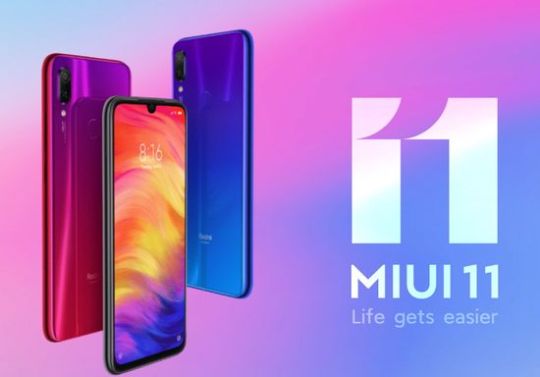
MIUI 11
The list of major changes: - DC dimming. Probably, DC dimming has become one of the main improvements of the new version. As known, adjusting the brightness of OLED matrices uses PWM (Pulse Width Modulation). Unfortunately, PWM causes the screen flicker when brightness decreases, which causes eye strain. In fact, this is one of the main disadvantages of modern AMOLED screens. Of course, the solution to this problem is a serious achievement. To reduce brightness, the algorithm reduces the voltage applied to the pixels, instead of frequency; - interface - dark theme schedule, displaying the % battery charge, selecting MIUI or Android notifications, font size settings, a button for switching between camera modules, etc; - a significant expansion of the assortment of sounds and their sets for notifications, mainly on the theme of nature (meowing, etc); - Always On Display with dynamic animation; - similar to Apple's AirPlay, MIUI 11 offers Cast from Xiaomi (support for transferring content to the screens of most modern Smart TVs without additional software or equipment); - similar to Apple's AirDrop, data transfer to some other smartphones (Xiaomi, OPPO, Realme and Vivo).
Xiaomi Mi 9T and Xiaomi Mi 9 SE
The Xiaomi Mi 9T with a retractable front selfie camera offers a minimal flagship set.
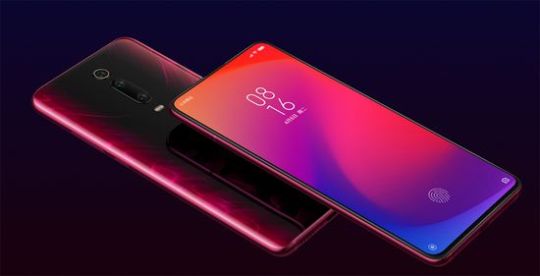
The model uses a 6.39-inch AMOLED display with 2340 x 1080 resolution (403 ppi), an 8-core Qualcomm Snapdragon 730 chipset (2 ARM Cortex-A76 with a frequency of up to 2.2 GHz and 6 ARM Cortex-A55 with a frequency of up to 1.8 GHz), RAM 6GB and 64/128GB. In addition, the model may well claim the status of a camera phone using a three-module camera (48 MP, 8 MP and 13 MP sensors) with f/1.75, f/2.40, f/2.40 aperture, LED flash, autofocus, macro mode and optical Zoom 2x. As usual, the front camera uses a 20 megapixel sensor. In addition, a 4000 mAh battery provides a good battery life. PROS - good hardware platform; - great main camera; - retractable front camera; - high battery life. Cons - does not support 4K @ 60 video recording; - the average level of the unlock system. Xiaomi Mi 9 SE is a compact version with a 5.97-inch Super AMOLED with 2340 x 1080 resolution (432 ppi).

MI 9 SE uses Snapdragon 712 (2 Kryo 360 clusters, including 2 Cortex-A75 with a frequency of 2.3 GHz and 6 Coretx-A55 with a frequency of up to 1.8 GHz), RAM 6GB and 64 / 128GB, NFC and fast charging. The model also has a three-module camera (8MP Sony IMX586 Exmor RS + 8MP + 13MP) and a 20-megapixel front camera.
Xiaomi Mi 9
Xiaomi Mi 9 is a more performance phone. Like the Mi 9T, the model uses a 6.39-inch AMOLED display with 2340 x 1080 resolution (403 ppi), RAM 6GB and 128GB.
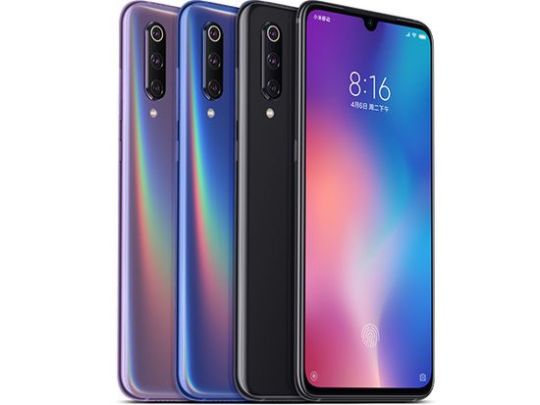
But the company equipped it with the more powerful Qualcomm Snapdragon 855 (8 Kryo 485, including Coretx-A76 up to 2.84 GHz + 512 KB cache, 3 Coretx-A76 (256 KB cache) up to 2.42 GHz and 4 Coretx-A55 up to 1.8 GHz).

As known, the first smartphones with Snapdragon 855, including Xiaomi Mi9, Samsung Galaxy S10, LG G8 and V50 were presented at MWC (Mobile World Congress) 2019. In addition, Mi 9 uses an exellent three-module (48 MP + 16 MP + 12 MP) camera with f/1.75, f/2.20 and f/2.20 aperture and a 20-megapixel front camera. PROS - great hardware platform; - excellent shooting quality; - Qualcomm Quick Charge and wireless charging. Cons - high price; - no optical stabilization; - there is no protection against moisture.
Xiaomi Mi 9 Pro 5G
But in September, the company already introduced the Xiaomi Mi 9 Pro 5G.
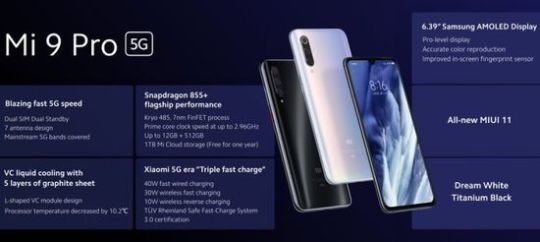
This smartphone has the latest Snapdragon 855+ (2019) with a fast Prime Core that clocks up to 2.96 GHz (up from 2.84 GHz in the 855), three fast ARM Cortex-A76 performance cores, which can reach up to 2.42 GHz and four power-saving ARM Cortex-A55 cores that clock up to a maximum of 1.8 GHz. In AnTuTu, the result of Xiaomi Mi 9 Pro 5G reaches 480,830 points. Its price is $ 520 for model with RAM 8GB and 128GB, $ 534 - 8/256GB, $ 577 - 12/256GB and $ 605 - 12/512GB. The capacity of battery increased from 3300 to 4000 mAh. The model supports triple fast charging. Charging time for wired charging is 48 minutes; wireless charging provides 2000 mAh in 25 minutes. The smartphone also supports wireless reverse charging for other mobile devices.

But other components have not changed much. The Mi 9 Pro 5G uses a 6.39-inch Samsung Super AMOLED Full HD+ display with a maximum brightness of 600 nits, and a fingerprint sensor is integrated under the screen. The three-module camera has a 48 megapixel sensor (wide-angle lens with a viewing angle of 79° and an aperture of f/1.75), a 16 megapixel sensor (ultra wide-angle lens with an aperture of f/2.2 and a viewing angle of 117°) and 12 megapixel sensor with f/2, 2. Additionally, the model has a front-facing 20-megapixel camera with f/2.0.
Xiaomi Black Shark 2
In addition, in 2019, the company introduced the second generation of the gaming Black Shark smartphone.
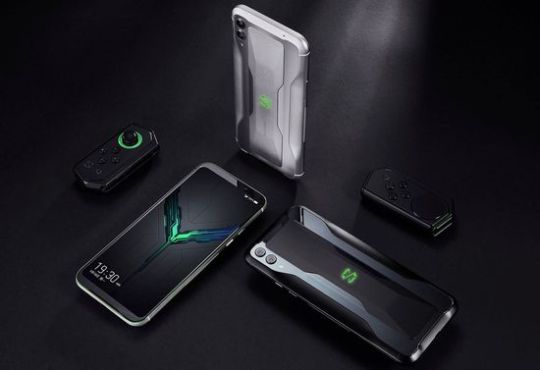
Xiaomi engineers managed to significantly improve the previous version. Firstly, Black Shark 2 uses an AMOLED matrix with an unprecedentedly low switching time for brightness levels and response of the sensor layer. Unfortunately, it does not support DC Dimming technology that eliminates screen flicker due to low frequency PWM. Secondly, the model uses an advanced liquid cooling system with a copper radiator and several layers of graphite film.

Unfortunately, it still heats up under prolonged high loads, but much less compared to Black Shark. The model uses an 8-core Qualcomm Snapdragon 855. In addition, the smartphone has a 6.39-inch AMOLED display with 2340 x 1080 resolution (403 ppi), RAM 6GB, 128GB, a dual-module camera (48 MP + 12 MP) with f/1.75 and f/2.20 aperture and 20-megapixel front camera. Additionally, a 4000 mAh battery provides a good battery life. PROS - Snapdragon 855; - very fast AMOLED matrix; - gamer interface; - Parental Control; - optional gamepad. Cons - no DC Dimming technology; - does not support memory cards; - no NFC (Near Field Communication) module. As known, the NFC module provides wireless data transmission at a short distance of up to 10 cm using a radio signal. The module practically does not consume energy and provides almost instant communication. Unfortunately, this protocol supports a rather low speed and limited amount of data. However, its popularity is growing rapidly.
Xiaomi Mi MIX Alpha
Of course, Xiaomi Mi Mix Alpha has become the most innovative phone in 2019. The area of its wrap-around screen reaches 180.6% of the body area. In fact, this unusual display is wrapped around the case.
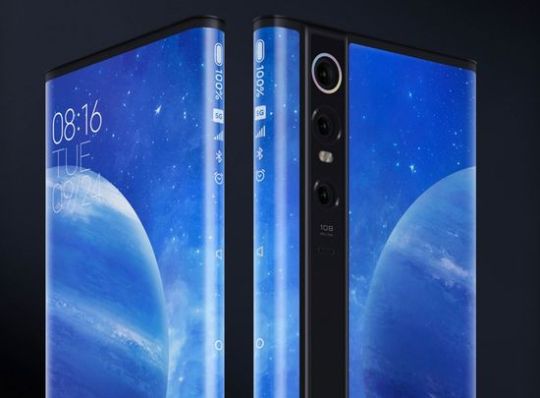
Its side faces are used to place touch buttons. Of course, the camera with a 108-megapixel sensor (1/1.33-inch) was the second sensation of the model.
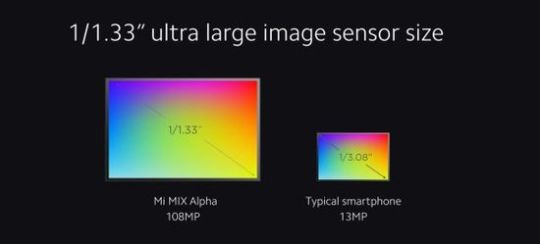
The camera also has an integrated optical image stabilization system. Lightweight and durable titanium alloy case provides a stylish design.
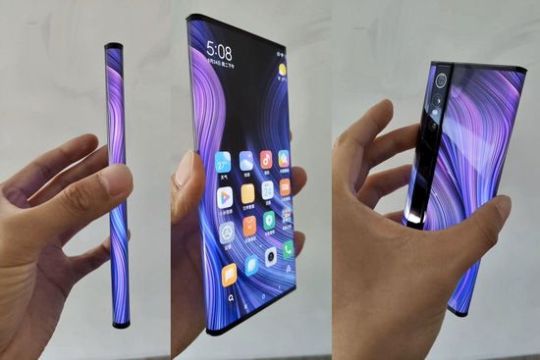
The rest of the specs also correspond to the highest level, including 5G, Snapdragon 855 Plus, RAM 12GB, 512GB, sound transmission technology via vibration of the screen surface, 4050 mAh battery, fast charge, etc. Unfortunately, the preliminary price of the model reaches around $ 3,000.
Conclusion
More recently, consumer electronics from Chinese brands was mainly positioned in the budget or mid-budget segments due to the relatively low quality and innovative level. But in the past few years, the situation has changed radically. Chinese smartphones, TVs, projectors, robotic vacuum cleaners are increasingly successfully competing with the flagships of traditional leaders. For example, many experts call Xiaomi Mi 9 Pro 5G one of the best models of 2019. In addition, Xiaomi Black Shark 2 successfully competes in the gaming segment. Moreover, Xiaomi Mi Mix Alpha rightfully claims to be the main innovative sensation of 2019. On the other hand, the price of Chinese brands also no longer refers to the budget segment. Of course, Samsung, LG, and other traditional leaders are still leading in terms of reliability and service. But Xiaomi can press them on the innovative Olympus. Of course, this factor will significantly affect the choice of the optimal smartphone among high-tech fans. This video shows a new Xiaomi Mi Mix Alpha phone with a unprecedented screen to body ratio (180,6%) and with a 108-megapixel sensor (1/1.33-inch). Read the full article
#DCdimmingtechnology#MIUserInterface#MIUI11#Snapdragon855Plus#XiaomiBlackShark2#XiaomiMi9#XiaomiMi9Pro5G#XiaomiMi9SE#XiaomiMi9T#XiaomiMiMixAlpha#Xiaomiphones
0 notes
Video
tumblr
iPhone 11 Pro Max vs Galaxy Note 10+ 5G saleholy.com
NETWORK Technology GSM / CDMA / HSPA / EVDO / LTE LAUNCH Announced 2019, September Status in stock BODY Dimensions 158 x 77.8 x 8.1 mm (6.22 x 3.06 x 0.32 in) Weight 226 g (7.97 oz) Build Front/back glass, stainless steel frame SIM Single SIM (Nano-SIM) or Dual SIM (Nano-SIM, dual stand-by) – for China IP68 dust/water resistant (up to 4m for 30 mins) Apple Pay (Visa, MasterCard, AMEX certified) Stylus support DISPLAY Type OLED capacitive touchscreen, 16M colors Size 6.5 inches, 102.9 cm2 (~83.7% screen-to-body ratio) Resolution 1242 x 2688 pixels, 19.5:9 ratio (~458 ppi density) Protection Scratch-resistant glass, oleophobic coating Dolby Vision HDR10 Wide color gamut True-tone 120 Hz touch-sensing PLATFORM OS iOS 13 Chipset Apple A13 Bionic (7 nm+) MEMORY Card slot No Internal 64GB 6GB RAM, 256GB 6GB RAM, 512GB 6GB RAM MAIN CAMERA Triple 12 MP, f/1.8, 26mm (wide), 1/2.55″, 1.4µm, PDAF, OIS 12 MP, f/2.0, 52mm (telephoto), 1/3.4″, 1.0µm, PDAF, OIS, 2x optical zoom 12 MP, f/2.4, 13mm (ultrawide) Features Quad-LED dual-tone flash, HDR (photo/panorama) Video 2160p@24/30/60fps, 1080p@30/60/120/240fps, HDR, stereo sound rec. SELFIE CAMERA Dual 12 MP, f/2.2 TOF 3D camera Features HDR Video 2160p@24/30/60fps, 1080p@30/60/120fps, gyro-EIS SOUND Loudspeaker Yes, with stereo speakers 3.5mm jack No Active noise cancellation with dedicated mic Dolby Atmos sound COMMS WLAN Wi-Fi 802.11 a/b/g/n/ac/ax, dual-band, hotspot Bluetooth 5.0, A2DP, LE GPS Yes, with A-GPS, GLONASS, GALILEO, QZSS NFC Yes Radio No USB 2.0, proprietary reversible connector FEATURES Sensors Face ID, accelerometer, gyro, proximity, compass, barometer Siri natural language commands and dictation BATTERY Non-removable Li-Ion 3500 mAh battery Charging Fast battery charging 18W USB Power Delivery 3.0 Qi wireless charging Reverse wireless charging MISC Colors Space Gray, Silver, Gold, Midnight Green Price About 445 USD Apple iPhone 11 Pro Max 512GB Unlocked Phone NETWORK Technology GSM / CDMA / HSPA / EVDO / LTE / 5G 2G bands GSM 850 / 900 / 1800 / 1900 CDMA 800 / 1900 – USA 3G bands HSDPA 850 / 900 / 1700(AWS) / 1900 / 2100 CDMA2000 1xEV-DO – USA 4G bands LTE (unspecified) 5G 5G NSA / Sub6 / mmWave Speed HSPA 42.2/5.76 Mbps, LTE-A (7CA) Cat20 2048/150 Mbps, 5G (2+ Gbps DL) BODY Dimensions 162.3 x 77.2 x 7.9 mm (6.39 x 3.04 x 0.31 in) Weight 198 g (6.98 oz) Build Front/back glass (Gorilla Glass), aluminum frame SIM Nano-SIM Samsung Pay (Visa, MasterCard certified) IP68 dust/water proof (up to 1.5m for 30 mins) Stylus (Bluetooth integration, accelerometer, gyro) DISPLAY Type Dynamic AMOLED capacitive touchscreen, 16M colors Size 6.8 inches, 114.0 cm2 (~91.0% screen-to-body ratio) Resolution 1440 x 3040 pixels, 19:9 ratio (~498 ppi density) Protection Corning Gorilla Glass HDR10+ Always-on display PLATFORM OS Android 9.0 (Pie); One UI Chipset Exynos 9825 (7 nm) – EMEA/LATAM CPU Octa-core (2×2.73 GHz Mongoose M4 & 2×2.4 GHz Cortex-A75 & 4×1.9 GHz Cortex-A55) – EMEA/LATAM GPU Mali-G76 MP12 – EMEA/LATAM Adreno 640 – USA/China MEMORY Card slot microSD, up to 1 TB (dedicated slot) Internal 256GB 12GB RAM, 512GB 12GB RAM MAIN CAMERA Quad 12 MP, f/1.5-2.4, 27mm (wide), 1/2.55″, 1.4µm, Dual Pixel PDAF, Dual OIS 12 MP, f/2.1, 52mm (telephoto), 1/3.6″, 1.0µm, PDAF, Dual OIS, 2x optical zoom 16 MP, f/2.2, 12mm (ultrawide), 1.0µm TOF 3D VGA camera Features LED flash, auto-HDR, panorama Video 2160p@30/60fps, 1080p@30/60/240fps, 720p@960fps, HDR10+, dual-video rec., stereo sound rec., gyro-EIS & OIS SELFIE CAMERA Single 10 MP, f/2.2, 26mm (wide), 1.22µm, Dual Pixel PDAF Features Dual video call, Auto-HDR Video 2160p@30fps SOUND Loudspeaker Yes, with stereo speakers 3.5mm jack No 32-bit/384kHz audio Active noise cancellation with dedicated mic Dolby Atmos/AKG sound COMMS WLAN Wi-Fi 802.11 a/b/g/n/ac/ax, dual-band, Wi-Fi Direct, hotspot Bluetooth 5.0, A2DP, LE, aptX GPS Yes, with A-GPS, GLONASS, BDS, GALILEO NFC Yes Radio FM radio (USA & Canada only) USB 3.1, Type-C 1.0 reversible connector FEATURES Sensors Fingerprint (under display), accelerometer, gyro, proximity, compass, barometer Samsung DeX (desktop experience support) ANT+ Bixby natural language commands and dictation BATTERY Non-removable Li-Ion 4300 mAh battery Charging Fast battery charging 45W USB Power Delivery 3.0 Fast Qi/PMA wireless charging 15W Power bank/Reverse wireless charging 9W Samsung Galaxy Note 10+ 5G Plus N976 6.8″ 12G/512GB Phone
http://www.saleholy.com/Wholesale-Discount-wholesale-apple-apple-iphone-11-pro-max_c153.html
0 notes
Text
Main Features
Brand: Samsung Model: Galaxy S10 5G Exynos (2019) CPU: Octa-core 2.73 GHz OS: Android 9.0 Memory: 512GB RAM: 8GB Screen: 6.7 Back Cam: 12+12+16+TOF MP Front Cam: 10+TOF MP Battery: 4500 mAh SIM: Dual SIM America 1089 Euro 882 USD 1089 Rs.119898
Free HD Wallpapers for Galaxy S10 5G Exynos (2019)
#gallery-0-4 { margin: auto; } #gallery-0-4 .gallery-item { float: left; margin-top: 10px; text-align: center; width: 25%; } #gallery-0-4 img { border: 2px solid #cfcfcf; } #gallery-0-4 .gallery-caption { margin-left: 0; } /* see gallery_shortcode() in wp-includes/media.php */
Samsung Galaxy S10 5G Exynos (2019) Free HD wallpapers, Galaxy S10 5G Exynos (2019) was launched in 10 April 2019. You can download wallpapers for your 6.7 inches, 112.0 cm2 (~89.4% screen-to-body ratio) screen size resolution 1440 x 3040 pixels, 19:9 ratio (~502 ppi density) and Dynamic AMOLED capacitive touchscreen, 16M colors. Samsung Galaxy S10 5G Exynos (2019) comes 512GB internal phone memory with 8GB RAM, It has powerful Non-removable Li-Ion 4500 mAh battery Fast battery charging 25W (USB Power Delivery 3.0) Fast wireless charging 15W Power bank/Reverse wireless charging 9W.
In this page you can free download HD wallpapers for Samsung Galaxy S10 5G Exynos (2019), it is powered by Android 9.0 (Pie); One UI with technology is GSM / CDMA / HSPA / EVDO / LTE / 5G, price is $1089. The Rear Camera is Quad 12 Megapixels, f/1.5-2.4, 26mm (wide), 1/2.55″, 1.4µm, Dual Pixel PDAF, OIS + 12 Megapixels, f/2.4, 52mm (telephoto), 1/3.6″, 1.0µm, AF, OIS, 2x optical zoom + 16 Megapixels, f/2.2, 12mm (ultrawide) + TOF camera LED flash, auto-HDR, panorama and front camera Dual 10 Megapixels, f/1.9, 26mm (wide), Dual Pixel PDAF + TOF camera Dual video call, Auto-HDR.
youtube
Samsung Galaxy S10 5G Exynos (2019) | Full Specifications of 512GB
Structure OS Android 9.0 (Pie); One UI Dimensions 162.6 x 77.1 x 7.9 mm (6.40 x 3.04 x 0.31 in) Thicknesss 7.9 mm Weight 198 g (6.98 oz) SIM Dual SIM Colors Prism White, Black, Gold Display Display Type Dynamic AMOLED capacitive touchscreen, 16M colors Screen Size 6.7 inches, 112.0 cm2 (~89.4% screen-to-body ratio) Resolution 1440 x 3040 pixels, 19:9 ratio (~502 ppi density) Software Chipset Exynos 9820 (8 nm) CPU Octa-core (2×2.73 GHz Mongoose M4 & 2×2.31 GHz Cortex-A75 & 4×1.95 GHz Cortex-A55) – EMEA GPU Mali-G76 MP12 Launch Announced 20 February 2019 Release date 10 April 2019 Speed HSPA 42.2/5.76 Mbps, LTE-A (7CA) Cat20 2000/150 Mbps; 5G Memory Card slot Without memory Card Internal 512GB RAM 8GB Camera Primary Quad 12 Megapixels, f/1.5-2.4, 26mm (wide), 1/2.55″, 1.4µm, Dual Pixel PDAF, OIS + 12 Megapixels, f/2.4, 52mm (telephoto), 1/3.6″, 1.0µm, AF, OIS, 2x optical zoom + 16 Megapixels, f/2.2, 12mm (ultrawide) + TOF camera LED flash, auto-HDR, panorama Features LED flash, auto-HDR, panorama Video 2160p@60fps, 1080p@240fps, 720p@960fps, HDR, dual-video rec. Secondary Dual 10 Megapixels, f/1.9, 26mm (wide), Dual Pixel PDAF + TOF camera Dual video call, Auto-HDR Connectivity WLAN Wi-Fi 802.11 a/b/g/n/ac/ax, dual-band, Wi-Fi Direct, hotspot Bluetooth 5.0, A2DP, LE, aptX GPS A-GPS, GLONASS, BDS, GALILEO NFC Yes Radio FM radio USB 3.1, Type-C 1.0 reversible connector 3.5mm jack yes available 32-bit/384kHz audio Active noise cancellation with dedicated mic Dolby Atmos/AKG sound Sensors Fingerprint (under display), accelerometer, gyro, proximity, compass, barometer, heart rate, SpO2 Battery Battery Non-removable Li-Ion 4500 mAh battery Fast battery charging 25W (USB Power Delivery 3.0) Fast wireless charging 15W Power bank/Reverse wireless charging 9W Technology GSM / CDMA / HSPA / EVDO / LTE / 5G
NOTE: We can not guarantee that the information on this page is 100% correct.
Samsung Galaxy S10 5G Exynos (2019) Price in usd Wallpapers Main Features Brand: Samsung Model: Galaxy S10 5G Exynos (2019) CPU: Octa-core 2.73 GHz OS: Android 9.0…
0 notes
Text
Persistent leaks have been flowing in for the last few months but it was today that finally announced a series of exciting products, including the first foldable phone, the new Galaxy S10 family, Samsung’s first 5G Phone, new Galaxy Camera technology, and new wearables at its annual launch event.
Though there were very few surprises, here is everything important that Samsung talked about at Unpacked 2019:
1. Galaxy Fold
It’s no surprise that Samsung started off with Galaxy Fold for the wow factor.
Samsung invented a new hinge system for the Fold that isn’t even visible from the outside. It required developing display tech and design processes from the ground up.
The Galaxy Fold will offer triple app multi-tasking. You can seamlessly switch between apps between screens.
Galaxy Fold is powered by Snapdragon 855 with 12GB RAM, 512GB storage.
Galaxy Fold combines power from two batteries – one for each screen.
It will be available in several attractive colors, and you will be able to customize hinge color too.
Galaxy Fold Price and Availability: Galaxy Fold will be available in 5G and LTE version starting $1960 from April 26.
This slideshow requires JavaScript.
2. New Galaxy S10 Camera Features
The triple camera system offers different sooting options. There’s AI scene recognition, real-time portrait ligting effects, photography advice to help compose perfect shots.
The Galaxy S10 Plus is the first phone in the world to capture HDR10 videos.
The Galaxy S10 can also shoot super steady action footage.
There is a new Adobe Premiere Pro Rush optimized for Samsung. It works with Dex and supports HDR 10.
The ultrasonic fingerprint sensor is designed to work well in all lighting conditions.
There is dual pixel tech for selfie camera, which means faster focus. The Plus variant gets dual cameras.
Galaxy S10 camera will have an Instagram mode. Quickly shoot and post to Instagram in a jiffy!
Samsung is opening the Galaxy Camera SDK to developers so they can develop more apps.
3. Galaxy Buds
The Sound has been tuned by AKG. The new Samsung buds have a custom chipset made by Samsung.
Galaxy buds offer 6 hours of battery life, support wireless charging, and come with a charging case.
You can also charge them by placing them on the back of your S10
Galaxy Buds will be available starting March 8 for $128
This slideshow requires JavaScript.
4. Galaxy Watch Active and Fit
Samsung also presented a couple of wearables at the Unpacked this year.
The new Galaxy Watch Active has 5ATM water resistance. The watch has 60,000 watch faces.
The Galaxy Fit weighs just 23 grams, is water resistant and has a color AMOLED screen.
Both wearables have activity tracking for 6 exercises, sleep tracking, and support 5 custom exercise modes.
And you can charge them wirelessly by placing them on your S10.
5. Galaxy S10 – Family
The biggest attraction was, of course, were the new Galaxy flagships phones:
The new Infinity-O AMOLED screens are the USP this year. Samsung has somehow reduced Blue light by 42% (without filter).
Galaxy S10 is the first phone to include Wi-Fi 6.
The new devices will come with up to10GB RAM and 1.5TB storage.
Samsung is working with Unity to improve gaming performance.
Also, there is fast charging 2.0, which is 36% faster than last gen tech, better connectivity, intelligent Wi-Fi and more.
This slideshow requires JavaScript.
Price and availability
Galaxy S10 Price: €1,149 for 8/512 GB; €899 for 6/128 GB
Galaxy S10+ Price: €1,499 for the limited edition 12GB RAM/1TB storage option; €1,299 for the 8GB +512GB model; €999 for 6GB+128GB variant
Galaxy S10E Price: €749 for the sole 6/128 GB
Samsung Galaxy S10 Plus vs Galaxy S10 vs Galaxy S10E Comparison
Model Samsung Galaxy S10 Plus Samsung Galaxy S10 Samsung Galaxy S10E Display 6.4-inch, 1440 x 3040 pixels (QHD+), AMOLED
HDR 10, Gorilla Glass 6
6.1-inch, 1440 x 3040 pixels (QHD+), AMOLED
HDR 10, Gorilla Glass 6
5.8-inch, 1080 x 2280 pixels (QHD+), AMOLED
HDR 10, Gorilla Glass 5
Processor
Exynos 9820 Octa (8 nm) Octa-core
2×2.7 GHz Mongoose M4 + 2×2.3 GHz Cortex-A75 + 4×1.9 GHz Cortex-A55
Qualcomm SDM855 Snapdragon 855
1×2.8 GHz Kryo 485 + 3×2.4 GHz Kryo 485 + 4×1.7 GHz Kryo 485
RAM 12GB/8GB 8GB 8GB/6GB Internal Storage Up to 1TB, 512GB Expandable (Hybrid slot) Up to 512GB, 512GB Expandable (Hybrid slot) Up to 256GB, 512GB Expandable (Hybrid slot) Software Android 9.0 Pie based One UI Rear Camera
Primary: 12 MP, f/1.5-2.4, 26mm (wide), 1/2.55″, 1.4µm, Dual Pixel PDAF, OIS
Telephoto: 12 MP, f/2.4, 52mm (telephoto), 1/3.6″, 1.0µm, AF, OIS, 2x optical zoom
Ultrawide: 16 MP, f/2.2, 12mm
Primary: 12 MP, f/1.5-2.4, 26mm (wide), 1/2.55″, 1.4µm, Dual Pixel PDAF, OIS
Telephoto: 12 MP, f/2.4, 52mm (telephoto), 1/3.6″, 1.0µm, AF, OIS, 2x optical zoom
Ultrawide: 16 MP, f/2.2, 12mm
Primary: 12 MP, f/1.5-2.4, 26mm (wide), 1/2.55″, 1.4µm, Dual Pixel PDAF, OIS
Ultrawide: 16 MP, f/2.2, 12mm
Front Camera
10 MP, f/1.9, Dual Pixel PDAF
8 MP, f/2.2, depth sensor
10 MP, f/1.9, Dual Pixel PDAF 10 MP, f/1.9, Dual Pixel PDAF Dimension & Weight 175 gram 7.8mm thick, 157 grams 7.9mm thick, 150 grams Others In-display fingerprint sensor, Bluetooth 5.0, Dolby Atmos, Dual-band Wi-Fi, IP68 water and dust resistant, Stereo speakers, USB 3.1 Type-C port In-display fingerprint sensor, Bluetooth 5.0, Dolby Atmos, Dual-band Wi-Fi, IP68 water and dust resistant, Stereo speakers, USB 3.1 Type-C port Side fingerprint sensor, Bluetooth 5.0, Dolby Atmos, Dual-band Wi-Fi, IP68 water and dust resistant, Stereo speakers, USB 3.1 Type-C port Battery 4100mAh, Fast charging, Wireless Charging, Reverse wireless charging 3400mAh, Fast charging, Wireless Charging, Reverse wireless charging 3100mAh, Fast charging, Wireless Charging, Reverse wireless charging
6. Galaxy S10 5G
Samsung’s first 5G phone looks a lot like Galaxy S10+, but there are a few differences.
The S10 5G comes with an even bigger 6.7-inch display and a bigger 4,500mAh battery.
It has a ToF camera to better support AR.
The Galaxy S10 5G also has faster fast charging (25W).
6 Major Galaxy Unpacked 2019 Highlights
So, this covers everything important that Samsung announced at its launch event today. We will be back with more S10 related stuff soon. Meanwhile, share what you are most exited about with us.
Unpacked 2019 Highlights: 6 Exciting Announcements From Samsung Event Persistent leaks have been flowing in for the last few months but it was today that finally announced a series of exciting products, including the first foldable phone, the new Galaxy S10 family, Samsung's first 5G Phone, new Galaxy Camera technology, and new wearables at its annual launch event.
0 notes
Text
Samsung Galaxy M64 128 GB And 8 GB RAM Mobile Phone Cheapest Price Amazon

The price of the Samsung Galaxy M64 5G is 550 US dollars / 499.00 to €530, Prices are for the 128 GB, 256 GB storage + 8 GB RAM model. The Samsung Galaxy M64 mobile is a mid-range smartphone offered by Samsung and one of the most outstanding phones that the company offers in this price range. Coming with a huge battery and a large Super AMOLED Plus screen, the phone is powered by the Android 13 operating system along with the One UI 5.1 user interface and offers many features. The phone is powered by a powerful Octa-core processor that is built with the layout of an Exynos M4, Cortex A75 and a Cortex A55 graphics processor , Mali-G76 MP12 GPU and 8GB RAM.
Is Samsung M64 out?
The Samsung Galaxy M64 5G are Samsung's new midrangers, and the phones just got announced, ready to take on the affordable market by storm and join the best mid-range phones in 31 May, 2023. ... Samsung Galaxy M64 5G release date. Device family Announcement Market release Samsung Galaxy M64 5G May 31, 2023 May, 2023
What Android version is Samsung Galaxy M64 ?
On the software front, the Galaxy M64 should launch with Android 13-based One UI 5.0.
What color is the M64 5G?
The Galaxy M64 5G will be available in four color options, including Awesome Lime, Awesome Silver, Awesome Violet and Awesome Graphite. Read the full article
0 notes
Text
LG phones Review
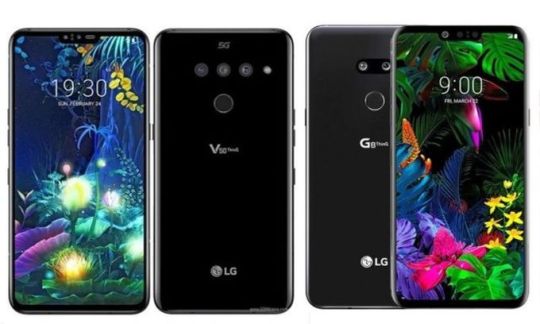
Fierce competition in the consumer electronics segment forces companies to constantly experiment. Of course, the modern smartphone market is no exception. In recent years, many segment leaders have been actively expanding their assortment, experimenting in search of the best price / quality ratio. As known, this parameter significantly affects the choice of the optimal phone. For example, many Best Sellers have only average specs, but a good price / quality ratio has ensured them marketing success. As a result, some companies annually released a large number of models with almost identical specs. For example, in 2014 Samsung introduced 56 new models, and LG - 41 new smartphones. But the cost of any product consists of the costs of development and design, production, logistics, advertising, etc. Further support also requires additional costs for updating the operating system, production of components for repair, etc. As a result, a large number of models almost always reduce profits due to rising costs. Therefore, many companies, including, for example, Apple and Google, prefer to limit their lineup to several models per year. Having recorded operating losses in 2016 and 2017, LG management also decided to reduce the range of new phones to reasonable sufficiency. At CES 2018, LG Electronics vice chairman Cho Sung-jin voiced this decision, answering a question about the release date of the next LG flagship. Indeed, in 2019, the company significantly reduced the number of new models, compensating for it with a significant improvement in the presented several models.
LG phones
Today, more than 600 companies produce smartphones. However, almost 80% of the world market belongs to ten major manufacturers, including South Korean Samsung (19%) and LG (3%), American Apple (12%), Finnish Nokia (1%) and Chinese Huawei (13%, including Honor), Xiaomi (9%), Oppo (9%), Vivo (8%), Lenovo (3%, including Motorola), Tecno (1%). As known, LG Electronics dominates the segment of OLED TVs. Naturally, the company also produces OLED displays for smartphones, using them in its models. However, some LG phones, including the flagship 2018 G7 ThinQ, use the IPS matrix without screen flicker due to the low-frequency PWM. Some ophthalmologists note the negative impact of this effect in terms of eye strain. On the other hand, this factor depends on reasonable sufficiency. Short-term flickering of an OLED screen is unlikely to harm vision, but after a few hours, your eyes will get tired from any screen. Despite the production of 5,000 matrices per day, the share of LG displays is negligible compared to Samsung, which stably dominates in this segment. However, LG Display sells OLED screens to Apple. In addition, the company is jointly developing OLED displays with Lufthansa Technik for use in aircraft. Modern LG models use Qualcomm Snapdragon chipsets, UFS memory and LG UX UI. In autumn 2019, the company introduced the latest Android 10-based UX 9.0 UI. According to some experts, it is very similar to the Samsung One UI interface. But maybe this is due to the similarity of aesthetic tastes of South Korean designers. The company has already released beta versions with an upgrade to Android 10 for the LG G8 ThinQ and V50 ThinQ. Today the company offers flagship G and V series and a wide range of mid-budget Q and K models.
LG G7 ThinQ
The LG G7 ThinQ is the flagship of 2018.

The phone uses an ultra-bright (up to 1000 nits) 6.1 - inch IPS display with 3120 x 1440 resolution (564 ppi), providing extended DCI-P3 color gamut and HDR10 support. In addition, the model has an 8-core Qualcomm Snapdragon 845 (4 Kryo 385 Gold (Cortex-A75) with a frequency of 2.8 GHz for CPU intensive tasks and energy-efficient 4 Kryo 385 Silver (Cortex-A55) with a frequency of 1.8 GHz ), RAM 6 GB, dual 16-megapixel camera (f/1.6 + f/1.9) and supports 2 SIM cards. The company supplies a phone with Android 8.1. DTS-X technology provides excellent 3D stereo sound. In addition, its protection complies with Militare Standard 810G + IP68. Unfortunately, the battery capacity is only 3000 mAh.
LG V40 ThinQ
The LG V40 ThinQ became the second flagship of 2018.
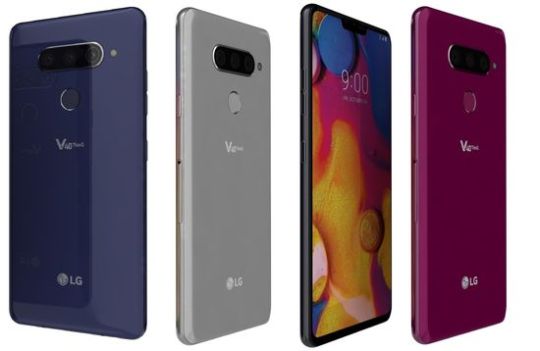
The V40 uses a 6.4-inch P-OLED panel with 3120 x 1440 resolution (537 ppi). Traditionally for this technology, the maximum brightness does not exceed 504 nits, but the minimum is only 3 nits, providing excellent contrast. Like the G7, the model uses the 8-core Qualcomm Snapdragon 845. Of course, the phone supports Dolby Vision, Always-on display and HDR10. ESS Technology's Saber ES9218PC DAC, resonant Boombox camera, DTS: X 3D Surround Sound for 7.1 channels, and a voice recorder with audio support in FLAC format provide traditionally superior sound quality. Of course, five cameras have become its main advantage. V40 uses a three-module main camera.

The aperture of the 12-megapixel optics sensor with large pixels reaches f/1.5. In addition, it has optical image stabilization. The second ultra-wide-angle module uses a 16-megapixel sensor with an aperture of f/1.9. The third 12-megapixel module with f/2.4 aperture has optical stabilization, phase autofocus and 2x optical zoom. Maybe this set is inferior to the top camera phones, including Huawei P20, Mate 20 Pro, Google Pixel 3 or Samsung Galaxy Note 9. But in general, the quality of shooting corresponds to a very high level. Moreover, the phone supports recording 4K video at 60 fps. Unfortunately, optical stabilization does not support this mode. In addition, the phone uses 8-megapixel standard module and 5-megapixel module with wide-angle optics for selfie.
LG G7 Fit
The LG G7 Fit was introduced at CES 2019. In fact, it has become the mid-budget version of the LG G7 ThinQ.

The phone uses a 6.1 - inch IPS (LTPS LCD) display with 3120 x 1440 resolution (QHD+) and a pixel density of 563 ppi. The model runs on Google Android 8.1. The main differences from the G7 include the use of the 4-core Qualcomm Snapdragon 821 chipset (2016), the main camera with only one module and the lack of wireless charging. In addition, the phone provides video recording of only 2160 x 30fps (G7 - 2160 x 60fps), and the widest aperture is only f/2.20 (G7 - f/1.9 & f/1.6). However, Qualcomm Snapdragon 821 demonstrates excellent performance, gaining 170,000 points in AnTuTu Benchmark. In addition, the G7 Fit protection complies with the MIL-STD810G standard and IP68, model has Bluetooth 5, NFC chip and high-speed memory. Boombox technology provides great sound. Unfortunately, battery capacity is only 3000 mAh, which provides about 8 hours of video playback at maximum brightness. Normal games drain the battery in about 6 hours, complex games in 4 hours. Despite the Fast Charge inscription on the network adapter, the battery lasts 1 hour 30 minutes. Today, this model competes with ASUS Zenfone 5Z, Huawei P20, Honor 10 and Samsung Galaxy A9 (2018).
V50 ThinQ 5G
At MWC (Mobile World Congress) 2019, the company introduced its first 5G model.
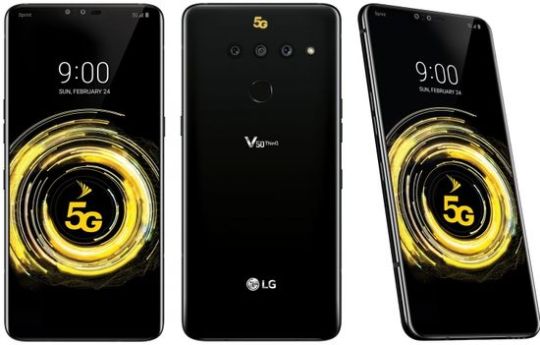
Instead of folding models, LG offered a case with a built-in 6.2-inch display, which is connected via POGO-contacts on the rear panel.

Probably, today the assessment of the feasibility of a second screen or a folding display is still premature. But next year, consumers will already be able to appreciate this trend. The model uses a 6.4-inch OLED display with QHD+ resolution (537 ppi), Snapdragon 855 chipset, 6GB RAM, three-module main camera (16 MP (f/1.9) + 12 MP (F/1.5) + 12 MP (f/2.4 ) and front 8 MP + 5 MP. The battery capacity reaches 4000 mAh.The phone runs on Android 9.0 Pie, meets the MIL-STD 810G standard, and supports Dolby Vision, Always-on display and HDR10.
G8 and G8s ThinQ
In addition to the V50, at the MWC 2019 the company also introduced the G8 and G8s ThinQ.

In fact, the G8s is a slightly simplified version of the G8. A list of minor differences include displays, battery capacity and camera resolution. Models have innovative OLED displays that support Crystal Sound technology, which uses the screen as a resonating surface for sound output.

The G8 uses a 6.1-inch OLED FullVision (18: 9) screen with a 3120 × 1440 resolution (564 ppi), the main camera (16 MP (f/1.9) + 12 MP (f/1.5) + 12 MP (f/2.4 )) and the front 8 MP + Z Camera (ToF). Its battery capacity is 3500 mAh. G8s is equipped with a 6.2-inch OLED FullVision (18: 9) screen with 2248 x 1080 resolution, the main camera (13 MP + 12 MP + 12 MP) and a front 8 MP + Z Camera (ToF). Its battery capacity reaches 3550 mAh. Both models work under Android 9.0 Pie, use Snapdragon 855, 6GB RAM and 64/128GB. Front 3D-sensors with Time-of-Flight (ToF) technology provide Face Unlock and gesture control. Today, the Air Motion option provides only receiving incoming calls, volume control and screenshot. Apparently, in the future its capabilities will expand. In addition, the models have all the traditional flagship options, including a fingerprint scanner, Hand ID, protection against water and dust (IP68), level of protection against external influences (MIL-STD 810G), 32-bit Hi-Fi Quad DAC , stereo speakers and boombox speaker.
Conclusion
In general, high reliability, innovative displays, great technical service, excellent sound quality and high-quality cameras ensure the high competitiveness of LG smartphones, allowing them to be among the leaders in the segment. In addition, the company's pronounced innovative orientation creates excellent prospects for future LG smartphones. As known, the company has already announced for 2020 new models under the names G10, G20, G30 and G40. This video offers concept and trailer with specs, features, price and release date of the new revolutionary mobile phone LG V60 ThinQ 5G (2020). Read the full article
#32-bitHi-FiQuadDAC#AirMotion#CrystalSoundtechnology#LGG7Fit#LGG7ThinQ#LGG8ThinQ#LGG8sThinQ#LGphones#LGUX9.0UI#LGV40ThinQ#LGV50ThinQ5G#LGV60ThinQ5G#MIL-STD810G#OLEDFullVision#ToF
0 notes
Text
Main Features
Brand: Samsung Model: Galaxy Note10+ 5G CPU: Octa-core 2.73 GHz OS: Android 9.0 Memory: 512GB RAM: 12GB Screen: 6.8 Back Cam: 12+12+16 MP Front Cam: 10 MP Battery: 4300 mAh SIM: SINGLE SIM America 1459 Euro 1182 USD 1459 Rs.160598
Free HD Wallpapers for Galaxy Note10+ 5G
#gallery-0-4 { margin: auto; } #gallery-0-4 .gallery-item { float: left; margin-top: 10px; text-align: center; width: 25%; } #gallery-0-4 img { border: 2px solid #cfcfcf; } #gallery-0-4 .gallery-caption { margin-left: 0; } /* see gallery_shortcode() in wp-includes/media.php */
Samsung Galaxy Note10+ 5G Free HD wallpapers, Galaxy Note10+ 5G was launched in 15 Aug 2019. You can download wallpapers for your 6.8 inches, 114.0 cm2 (~91.0% screen-to-body ratio) screen size resolution 1440 x 3040 pixels, 19:9 ratio (~498 ppi density) and Dynamic AMOLED capacitive touchscreen, 16M colors. Samsung Galaxy Note10+ 5G comes 512GB internal phone memory with 12GB RAM, It has powerful Non-removable Li-Ion 4300 mAh battery.
In this page you can free download HD wallpapers for Samsung Galaxy Note10+ 5G, it is powered by Android 9.0 (Pie); One UI with technology is GSM / CDMA / HSPA / EVDO / LTE / 5G, price is $1459. The Rear Camera is 12 Megapixel, f/1.5-2.4, 27mm (wide), 1/2.55″, 1.4µm, Dual Pixel PDAF, OIS 12 Megapixel f/2.1, 52mm (telephoto), 1/3.6″, 1.0µm, PDAF, OIS, 2x optical zoom 16 Megapixel, f/2.2, 12mm (ultrawide), 1.0µm, Super Steady video and front camera 10 Megapixel, f/2.2, 26mm (wide), 1.22µm, Dual Pixel PDAF.
youtube
Samsung Galaxy Note10+ 5G | Full Specifications of 512GB
Structure OS Android 9.0 (Pie); One UI Dimensions 162.3 x 77.2 x 7.9 mm (6.39 x 3.04 x 0.31 in) Thicknesss 7.9 mm Weight 198 g (6.98 oz) SIM SINGLE SIM Colors Aura Glow, Aura White, Aura Black Display Display Type Dynamic AMOLED capacitive touchscreen, 16M colors Screen Size 6.8 inches, 114.0 cm2 (~91.0% screen-to-body ratio) Resolution 1440 x 3040 pixels, 19:9 ratio (~498 ppi density) Software Chipset Exynos 9825 (7 nm) – EMEA/LATAM CPU Octa-core (2×2.73 GHz Mongoose M4 & 2×2.4 GHz Cortex-A75 & 4×1.9 GHz Cortex-A55) – EMEA/LATAM GPU Mali-G76 MP12 – EMEA/LATAM Launch Announced 30 Aug 2019 Release date 15 Aug 2019 Speed HSPA 42.2/5.76 Mbps, LTE-A (7CA) Cat20 2048/150 Mbps, 5G (2+ Gbps DL) Memory Card slot microSD, up to 1 TB Internal 512GB RAM 12GB Camera Primary 12 Megapixel, f/1.5-2.4, 27mm (wide), 1/2.55″, 1.4µm, Dual Pixel PDAF, OIS 12 Megapixel f/2.1, 52mm (telephoto), 1/3.6″, 1.0µm, PDAF, OIS, 2x optical zoom 16 Megapixel, f/2.2, 12mm (ultrawide), 1.0µm, Super Steady video Features Dual video call, Auto-HDR Video 2160p@30/60fps, 1080p@30/60/240fps, 720p@960fps, HDR10+, dual-video rec., stereo sound rec., gyro-EIS & OIS Secondary 10 Megapixel, f/2.2, 26mm (wide), 1.22µm, Dual Pixel PDAF Connectivity WLAN Wi-Fi 802.11 a/b/g/n/ac/ax, dual-band, Wi-Fi Direct, hotspot Bluetooth 5.0, A2DP, LE GPS Yes, with A-GPS, GLONASS, BDS, GALILEO NFC Yes Radio FM radio (USA & Canada only) USB 3.1, Type-C 1.0 reversible connector 3.5mm jack – Sensors Fingerprint (under display, ultrasonic), accelerometer, gyro, proximity, compass, barometer Battery Battery Non-removable Li-Ion 4300 mAh battery Technology GSM / CDMA / HSPA / EVDO / LTE / 5G
NOTE: We can not guarantee that the information on this page is 100% correct.
Samsung Galaxy Note10+ 5G Price in usd Wallpapers Main Features Brand: Samsung Model: Galaxy Note10+ 5G CPU: Octa-core 2.73 GHz OS: Android 9.0 Memory:
0 notes